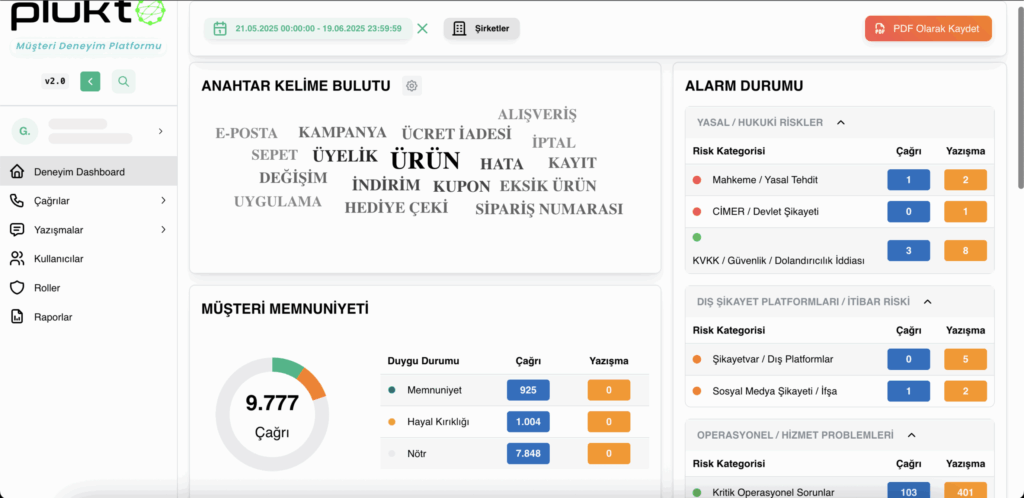How to Boost Sales Success with AI in 10 Strategic Steps
- July 2, 2025
AI is revolutionizing the world of sales. Traditional sales processes, once driven by intuition and past experience, are now powered by data, automation, and real-time insights. Especially in today’s landscape—where customer data is richer, communication channels are more diverse, and competition is fiercer—AI brings speed, foresight, and efficiency to sales teams.
So how can you leverage AI technologies to elevate your sales performance? Here are 10 strategic steps:
1. Automatically Make Sense of Customer Data
Understanding the customer is the cornerstone of any sales process. But customer data is often scattered—not just in CRM systems, but across web behavior, emails, past purchases, and social media interactions.
AI-powered systems analyze this data in real time and deliver actionable insights to sales teams. For instance, AI can identify the product categories a prospect is most interested in, their historical response time to offers, or which items they left in their cart. This enables sales reps to tailor their approach with more precision and personalization.

2. Enhance Sales Forecasting Accuracy
Traditional sales forecasting often relies on intuition or manual analysis. AI goes far beyond that.
Machine learning algorithms analyze hundreds of variables—such as seasonality, campaign history, and purchasing habits—to produce far more accurate forecasts. These predictions inform everything from supply chain planning to campaign scheduling.
3. Identify and Prioritize Your Most Valuable Customers
Not every customer has the same potential. AI can score customers based on their past behavior and interaction data.
Which customers are most likely to buy again? Who is at risk of churning? Who has high revenue potential? AI answers these questions with clarity, enabling sales teams to allocate their time and resources to the right targets.

4. Automate First Contact with Chatbots
Timing is critical in sales. As soon as a visitor lands on your website, AI-powered chatbots can engage them.
These bots can suggest products, direct visitors to relevant pages, and answer questions—boosting the quality of the first interaction. Especially in B2C environments, this has a direct impact on conversion rates.
You can find detailed information about the use of chatbots here.
5. Support Sales Reps in Real Time
AI doesn’t just assist customers—it empowers sales reps, too. During a call or meeting, it can surface suggested replies, past complaints, or relevant case resolutions directly on the rep’s screen.
This allows salespeople to respond faster, more consistently, and more accurately. AI-assisted reps achieve higher customer satisfaction and improve their conversion rates.

6. Deeply Analyze Voice and Text-Based Customer Feedback
Customers often share their experiences silently—through reviews, feedback forms, or call center interactions. These data sources are massive and fragmented.
Using natural language processing (NLP), AI can analyze this feedback and uncover insights that directly inform your sales strategy.
🎯 Case Study: LC Waikiki Analyzed Customer Requests with Grispi & Plukto

In partnership with Plukto and Grispi, LC Waikiki implemented an AI-driven analysis system that processed around 1 million customer comments from voice and text channels.
For example, AI detected frequent complaints in the shoe category about missing sizes like 38–39. It flagged this as a “mid-size demand issue” and reported it to the brand.
Results were striking:
- Opportunities for improvement were identified in over 150 products.
- The design team integrated these insights into the production cycle.
- Stock turnover rates increased and return rates declined.
- Human effort for comment analysis dropped to zero.
- Customer satisfaction rose by 34%.
With Plukto’s advanced dashboard structure, these insights can also be shared as tailored PDF reports for different departments. Teams across product management and marketing now access and act on real-time insights.

7. Create Dynamic, Personalized Campaigns
AI can design personalized email and messaging campaigns by analyzing user behavior and history.
For instance, if a customer adds items to their cart but doesn’t complete the purchase, AI can send a reminder at just the right time. It even customizes the message based on the customer’s previous interests.
8. Automate Repetitive Sales Processes
Manual tasks like preparing proposals, updating CRM, or scheduling meetings consume valuable time.
AI-powered automations can take over these repetitive tasks, allowing sales teams to focus on high-value activities that truly drive results.
9. Detect Customer Emotions and Predict Risks
By analyzing customer messages and call recordings, AI can detect emotional cues like dissatisfaction, frustration, or confusion.
This makes it possible to identify at-risk customers early, reduce churn, and take timely action.

10. Drive Continuous Improvement with Analytics and Reporting
AI doesn’t just drive action—it fuels strategy. With advanced reporting dashboards, you can continuously monitor sales channels, rep performance, customer behavior, and campaign results.
AI-powered visualization tools help decision-makers interpret complex data quickly and effectively.
Digitalizing your sales process is no longer enough—it needs to be intelligent. AI-powered tools like Grispi and Plukto make a real difference in both understanding customers and managing sales operations efficiently.
Brands that invest in AI aren’t just future-proofing their sales—they’re gaining a long-term competitive edge. If you’re ready to prepare your sales team for what’s next, start integrating these 10 AI strategies into your roadmap today.
Contact us
Fill out the form for detailed information and demo account and we will call you.
